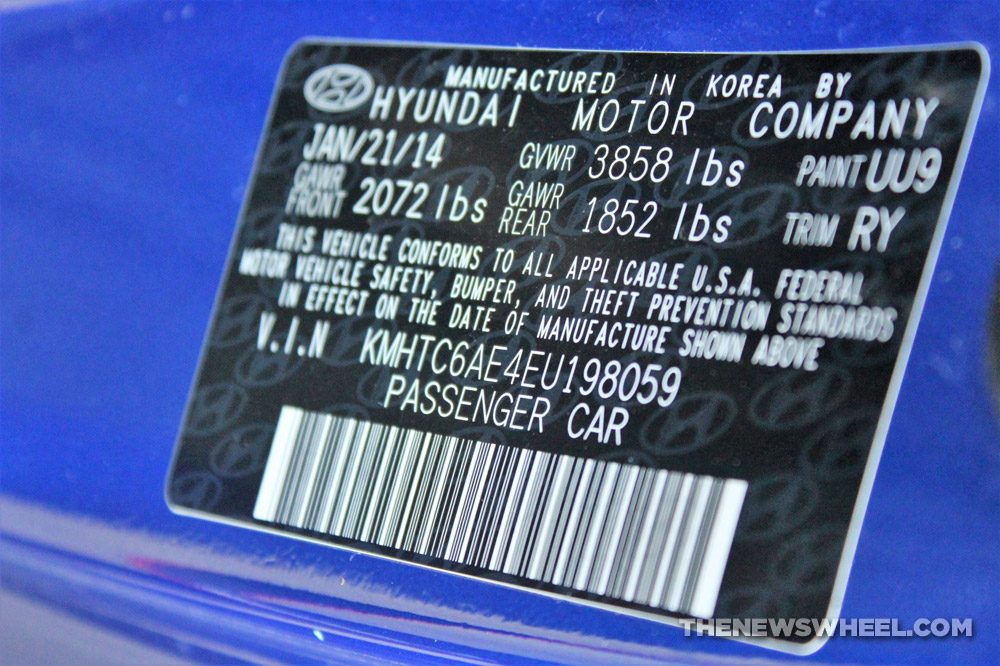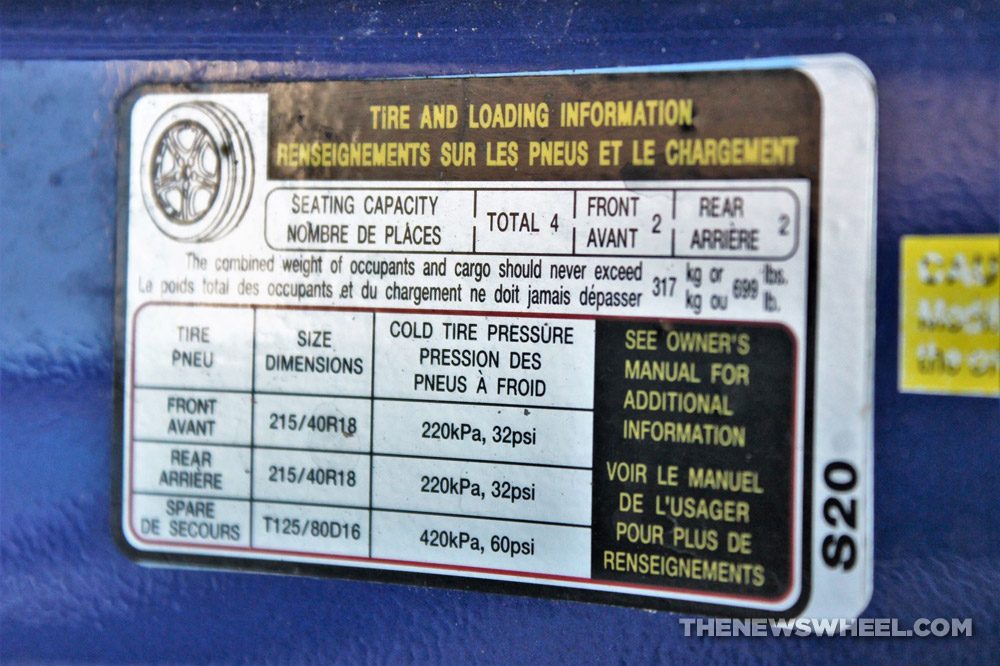 Photo: The News Wheel
Photo: The News Wheel
You don’t have to comb through your car’s owner’s manual to find fundamental information about it. That data is printed in a much easier place to access. For most cars, it’s a sticker on the inner frame of the driver’s door (though some have it on the door itself, the A-pillar, or the glove box). In fact, you may find two placards, each displaying valuable information.
Here’s a quick explanation of how to read those door jamb stickers.
Why Buy a Used Car? Reasons you should consider purchasing a vehicle someone else once owned
Assembly info: The automaker who produced your vehicle, where it was manufactured, and the day it was manufactured. Remember this date so you can celebrate your car’s birthday!
Paint: The factory paint used on your car. This is useful if you’re ordering a touch-up brush so you select the proper hue.
Trim: A code identifying the trim level of your particular vehicle (not necessarily the actual name of the trim).
GVWR: The gross vehicle weight rating, which is the maximum operating weight of the vehicle, a full tank of fuel, a full load of passengers, and cargo. The VIN sticker can divide this number into front and rear weights to identify the maximum weight that either axle can handle.
VIN number & bar code: The unique identification “fingerprint” of your specific car. No other car — even the same make and model — has the same VIN number. Refer to this when scheduling service appointments, researching the recorded history of the vehicle, etc.
Should You Buy a Used Ford truck? Experts give their verdict
 Photo: The News Wheel
Photo: The News Wheel
Seating capacity: This definitively states how many seats are in the vehicle, which determines the number of occupants that can legally ride in the car. This information shouldn’t surprise you, but this specification’s presence ensures there’s never any debate over it.
Maximum weight capacity: For your safety and the vehicle’s performance, make sure you never exceed this weight limit — a combination of passengers and cargo. It’s a good idea to know your vehicle’s particular weight limit because it’s possible to exceed it. For instance, four occupants weighing 150 pounds each plus two 50-pound luggage bags in the trunk total 700 pounds — and that exceeds this model’s prescribed 699-pound weight limit.
Size/dimensions: To ensure that the correct tires are purchased and installed on the vehicle, whether that’s by you or a mechanic.
Cold tire pressure: The recommended PSI level that each tire should be inflated to. When checking the pressure, make sure you wait until the vehicle has been parked for at least three hours.
Knowing and understanding this fundamental information on the door jamb sticker is an essential step in familiarizing yourself with your car.
Aaron is unashamed to be a native Clevelander and the proud driver of a Hyundai Veloster Turbo (which recently replaced his 1995 Saturn SC-2). He gleefully utilizes his background in theater, literature, and communication to dramatically recite his own articles to nearby youth. Mr. Widmar happily resides in Dayton, Ohio with his magnificent wife, Vicki, but is often on the road with her exploring new destinations. Aaron has high aspirations for his writing career but often gets distracted pondering the profound nature of the human condition and forgets what he was writing… See more articles by Aaron.



